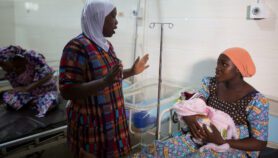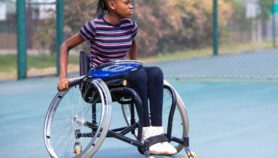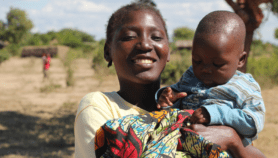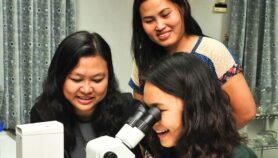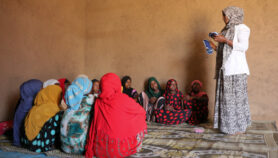Send to a friend
The details you provide on this page will not be used to send unsolicited email, and will not be sold to a 3rd party. See privacy policy.
A six-country assessment shows how women’s inclusion in science should be supported, write gender experts Sophia Huyer and Nancy Hafkin.
Across the world, many women drop out of — or never enter — work in the ‘knowledge society’, even after studying science and technology. Low enrolment rates for women in all but the life sciences, and high dropout rates after university (almost a third of women in science), result in not only the loss of their potential contributions, but also the investment in their education.
A recent pilot assessment of the status of women in the knowledge society — collectively the science, technology and innovation (STI) and information and communication technology (ICT) sectors — looked at the potential for and actual contributions of women in six countries and one region: Brazil, India, Indonesia, South Africa, South Korea, the United States, and the European Union.
The assessment was undertaken by Women in Global Science and Technology (WISAT) and the Organization for Women in Science for the Developing World (OWSD) from November 2011 to May 2012, with support from the Elsevier Foundation. [1]
Our overall finding is that all the countries in this study have failed to include women to an equal extent in the knowledge economy — and in many cases, their inclusion is negligible. But the assessment also highlights policies that can help put countries on the right track to women’s inclusion.
Extent of the divide
The assessment identifies gender barriers in a range of areas — health, social status, the economy and access to resources. These are preventing women and girls from accessing technology, information and learning, and from participating equally in scientific research and employment, decision-making and the private sector.
It also shows that few countries are collecting consistent gender data in any of these areas, leaving an evidence vacuum in crafting STI and knowledge society policies.
From the data that do exist, the gender divide is also clear. Women are represented equally with men in only health and life sciences education. In most countries they remain severely under-represented in engineering, physics and computer science — women make up less than 30 per cent of graduates in these subjects.
The total number of women working in these fields is low and declining across the board. And even in countries where the number of women studying science and technology has increased, the rise has not translated into more women in the workplace.
Policy and funding
So what should be done to move in the right direction? A combination of actions in education, economic status, social status and health is required.
Empowerment factors include higher economic status, greater roles in government and politics and access to resources. But equally important are childcare, healthcare, equal pay and gender mainstreaming in national policy.
An ‘enabling’ policy environment is a crucial first step. A cross-government approach is needed to integrate and monitor gender concerns and effects on women in all areas — from health and education to infrastructure, energy and banking. For example, does national policy take into account the need for safe, affordable and efficient transport for women’s personal and livelihood needs?
But good policies also need funding. India has an excellent policy environment for women, but insufficient funding and implementation means it has the lowest ranking among the countries we surveyed.
Countries doing well
On the other hand, Brazil punches far above its weight by standard development measures. It ranks highly overall, and first in the representation of women in science and technology, as a result of programmes that support women in the workforce, stable funding for education and research, and support of female entrepreneurship.
South Africa scores well too, with a high number of women in science nationally. It has the highest percentage of female members of a national science academy in the study — demonstrating a supportive policy environment and evidence that women can do the work.
This high ranking is the result of promoting female participation in politics in South Africa (45 per cent of elected and appointed officials are women) and in decision-making and management positions, as well as freedom for women to choose the timing and number of their children. The country has a national quota system that promotes diversity of participation and leadership by race and gender.
Opportunities for growth
Our study shows that supporting women in education and health are only the first steps in what needs to be a multi-dimensional policymaking approach that includes supporting women’s ability to fulfil their educational and professional aspirations, providing flexible education and training opportunities, and reinforcing their ability to make choices and decisions about their lives.
And this should be complemented by social and health support such as childcare, flexible work and access to healthcare. Our study found that where women’s health and/or social status is low, countries fall behind from the very beginning, even in the presence of an enabling policy environment — India is a case in point. Similarly, South Africa’s success is restricted to a minority of its female population due to low economic and health status.
If women’s pay rates were raised to the same level as men’s, GDP would rise by five per cent in the United States, and by a huge 34 per cent in Egypt. [2] Countries that fail to capitalise on women are failing to expand their knowledge society and innovative capacities — inhibiting development and potential for growth.
Sophia Huyer is the founding executive director of Women in Global Science and Technology (WISAT) and advisor to the Organization for Women in Science for the Developing World (OWSD). Nancy Hafkin is a WISAT senior associate and a 2012 inductee into the Internet Society’s Hall of Fame. Sophia can be contacted at [email protected] and Nancy at [email protected].
References
[1] Selected reports are available at www.wigsat.org/node/49
[2] Aguirre, D. et al. Empowering the Third Billion: Women and the World of Work in 2012. Booz & Company 2012


